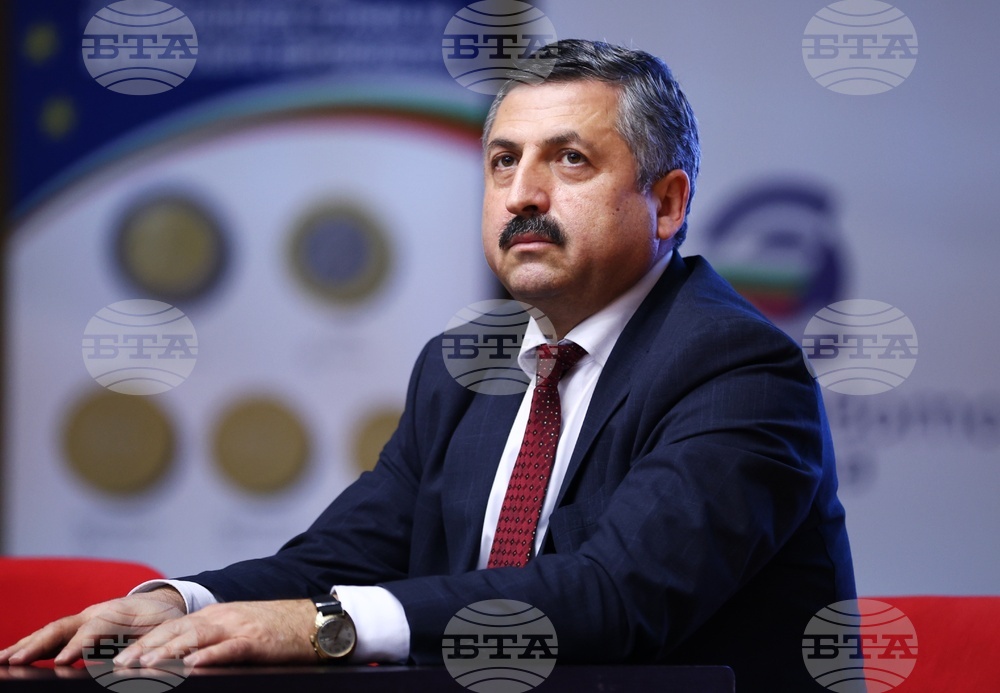site.btaBNB Chief Cashier: Bulgaria Will Need 520 Tonnes of Euro Banknotes After Joining Eurozone


Bulgaria will need 520 tonnes of euro banknotes, equivalent to 25 trucks, for circulation after it joins the eurozone, while the quantity of euro coins will reach 3,600 tons, or 181 trucks, said Bulgarian National Bank (BNB) Chief Cashier Stefan Tzvetkov. He was speaking Tuesday during the Euro Week initiative and the 10th Annual Monetary and Economic Science Conference at the University of National and World Economy (UNWE).
According to Tzvetkov, the Bulgarian banknotes that will have to be withdrawn from circulation to make room for euro banknotes add up to 642 tonnes, or 32 trucks, which if lined up would stretch across five football fields. As for Bulgarian coins, they amount to 378 trucks, which, if lined up, would form a column 6.8 kilometers long.
"The issuing bank is responsible for issuing, storing, processing, and withdrawing banknotes from circulation, as well as destroying them. No other institution in the country has the right to both issue and destroy banknotes," Tzvetkov explained, highlighting the extensive work ahead for the BNB as Bulgaria prepares to join the eurozone.
He also said that there are currently 604 million Bulgarian banknotes in circulation, with a total value of BGN 29.7 billion. The number of Bulgarian coins in circulation is 3.3 billion, with a total value of BGN 615 million.
The BNB Chief Cashier presented the design for Bulgaria’s euro coins, which will feature national symbols: the Madara Horseman (a large early medieval rock relief carved on the Madara Plateau East of Shumen in northeastern Bulgaria) on coins from 1 to 50 cents, Saint John of Rila (the patron Saint of the Bulgarian people) on the 1-euro coin, and Paisiy Hilendarski (a Bulgarian Orthodox clergyman and a key Bulgarian National Revival figure) on the 2-euro coin.
Tzvetkov also noted that the BNB will be able to continue issuing commemorative coins, which will appear on the national side of the 2-euro coin. These commemorative coins, celebrating significant events in Bulgarian history, will be issued throughout the eurozone. The BNB will also be able to issue so-called “collector coins”, which, unlike commemorative coins, will only be used for payments within Bulgaria.
He also recalled that there will be a period of dual circulation after the euro's adoption. For one month after the euro's introduction, the lev and the euro will both be legal tender. After that, for six months, leva can be exchanged at banks and Bulgarian post offices without any fees.
During the discussion, Deputy CEO, Chief Financial Officer, and Board Member of Postbank, Dimitar Shumarov, expressed his opinion that Bulgaria should join the eurozone, pointing out that the realistic target date for accession is January 1, 2026.
"By joining the eurozone, we will forever define ourselves as part of Europe, and we are part of Europe. If you look at the euro banknotes, you'll see they are printed in Cyrillic script because of us. For the first time, an EU country has been allowed to feature a Christian cross on the back of its coins, this is something we achieved on our path to integration with European countries," Shumarov said.
During the event, Lyubomir Karimanski, a researcher at the Institute for Economics and Policies at UNWE, gave a lecture on the European Central Bank's (ECB) plans to issue a digital euro.
He explained that the reduction in the number of euro banknotes is a risky trend for the ECB because it means that this value is being shifted into other currencies or private digital assets. The creation of a digital euro will ensure the euro's role as a monetary anchor and could fix one of the European Union's mistakes - its failure to establish its own payment system, Karimanski said.
/DT/
news.modal.header
news.modal.text